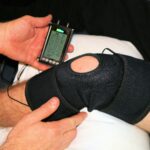Anything from your morning exercise to spending a day with family might be significantly impacted by hip discomfort. Hip arthroscopy surgery has become a ray of hope for a lot of people in Melbourne. By enabling patients to restore mobility and resume their active lives more quickly than ever before, this minimally invasive technique is completely changing the way we treat hip problems. Orthopaedic surgery is always changing due to technological and procedural improvements, so it’s critical for patients to be aware of what to anticipate from this cutting-edge treatment option. Let’s explore hip arthroscopy and learn about its advantages and procedures!
Hip Arthroscopy Surgery Fundamentals
A minimally invasive surgical technique called hip arthroscopy is used to identify and treat a variety of hip disorders. An arthroscope, a tiny camera that enables surgeons to see within the joint without creating extensive incisions, is used in this procedure.
Numerous small incisions are made around the hip region throughout the procedure. Through these incisions, the surgeon inserts specialised tools to remove or repair damaged tissues, such as loose pieces or rips in the cartilage.
The shorter recovery period than with open surgery is one of the main benefits of this method. Smaller incisions often result in less discomfort and less scarring for patients.
Hip arthroscopy surgery Melbourne may treat problems that influence hip function, such as impingement syndromes and labral tears,and this treatment has become more and more popular. Hip arthroscopy’s accuracy and efficacy are becoming better as technology develops.

Advantages of Surgery for Hip Arthroscopy
For a variety of hip disorders, hip arthroscopy surgery provides a less invasive treatment option. When compared to open surgical techniques, patients often report less discomfort.
Faster recuperation times are one of the main advantages. Many people resume their regular activities earlier, which improves their general quality of life.
Less scarring results from this surgery as well. Over time, the tiny wounds made during the procedure become less apparent and heal more quickly.
Better joint function is yet another important benefit. Patients may successfully restore strength and mobility by directly treating conditions like impingement or damaged labrums.
This technique’s accuracy reduces post-surgery problems and suffering by enabling focused therapy without causing damage to neighbouring tissues. In Melbourne’s healthcare system, this targeted approach greatly enhances patient satisfaction.
Technological and Methodological Developments
Hip arthroscopy surgery has advanced significantly in recent years. Surgeons’ approach to this surgery is changing due to new technology, which improves patient outcomes and increases accuracy.
The usage of 3D imaging equipment is one noteworthy advancement. These make it possible to see the hip joint in great detail both before and during surgery. Previously unachievable precision in procedure planning is now possible for surgeons.
Additionally, procedures are becoming less intrusive thanks to better tools. Less scarring and faster healing are the results of smaller incisions. The danger of problems is also decreased by this less invasive procedure.
Additionally, robotic-assisted instruments are becoming increasingly widespread. Because of their improved dexterity, surgeons can more easily manoeuvre through intricate anatomical structures.
By reducing the agony and recovery time associated with conventional techniques, these technological advancements not only improve surgical performance but also improve patient experiences in general.

What to anticipate before to, during, and after surgery
Your surgeon will consult with you before hip arthroscopy. You may ask questions regarding the operation and talk about your medical history at this point. To help your doctor better understand your illness, you could have imaging tests like MRIs or X-rays.
You should anticipate arriving at the hospital early on the day of surgery. Anaesthesia will be administered to you to guarantee your comfort throughout the process. To get access, the surgeon will make tiny incisions around your hip joint. They will identify and address any underlying problems with the use of specialised tools.
Recovery starts right away in a supervised area after surgery. There are choices for pain medication to assist you get through this stage, but be prepared for some discomfort. Soon after, rehabilitation usually begins, with the goal of restoring strength and mobility over a period of weeks or months under the supervision of your medical team.












